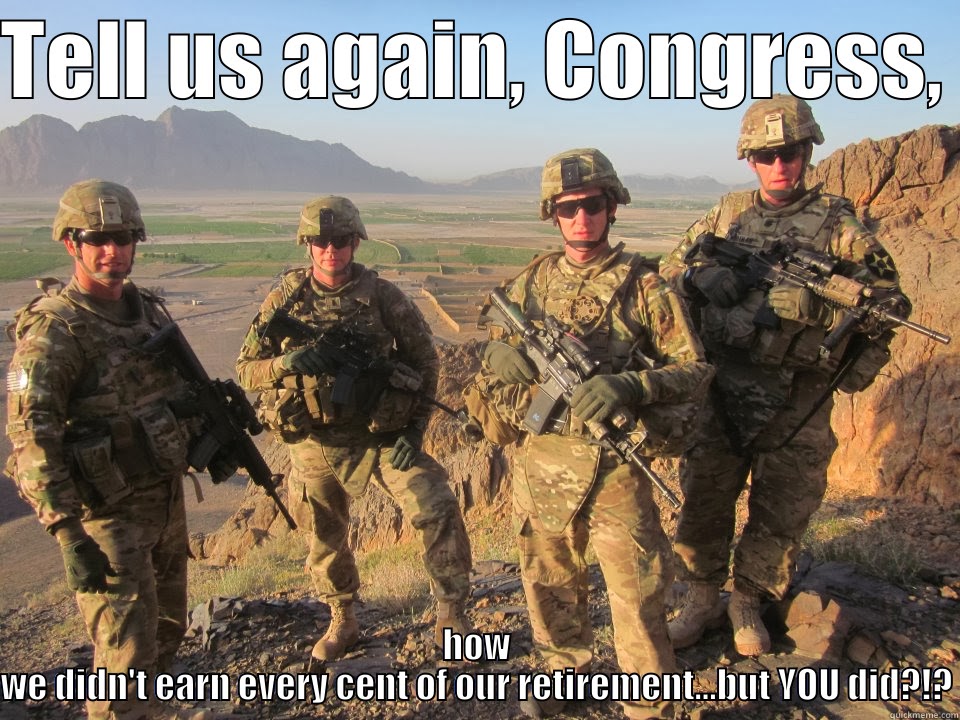In the news: Ryan Defends Reduction to Cost-of-Living Adjustments for Early Military Retirees
In a stunning display of which segment of society politicians are really afraid of last week politicians in Washington agreed to cut military retired pay in an effort to offset the sequester cuts that they put in place just two years ago. Unsurprisingly there has been absolutely zero talk about attempting to curb growth in other entitlement spending such as SNAP and TANF (welfare)being the two largest programs. The logic behind it is clear. There are more people receiving welfare than military retirees thus making welfare recipients a more powerful voting bloc.
 The numbers just for SNAP & TANF
The numbers just for SNAP & TANF
SNAP – 46,670,373 people or 14% of US population cost = $71.8 Billion annually
TANF – 12,800,000 people or 4.1% of US population cost = $131.9 Billion annually
By contrast here are the numers for military retiress – 2,300,000 military retirees in the US or roughly .7% of US population cost = $52.4 billion annually
What is the difference between the two groups? Easy, military retirees dedicated a significant portion of their lives to serving the nation, welfare recipients did not.
Total honesty, I myself am a military retiree and feel betrayed by both my country and my elected representative. My Congressman (John Carter, TX-32) voted yes. I made a deal with the nation, I would serve and go where they wanted me to and fight who they told me to fight, in return I would receive a set amount of benefits after twenty years service. I did so for 23 years and went to two wars. Now I find out that my country is not going to keep up their end of the bargain.
